What are the knee compartments?
- Lateral tibiofemoral joint
- medial tibiofemoral joint
- Patellofemoral joint
2 planes of motion
- Rarely occur without interaction from other joints of the LE
- About 2/3 of the muscles the cross the knee also cross the hip or the ankle
Stability ___.
soft tissue restraints rather than boney anatomy
Osteology: distal femur
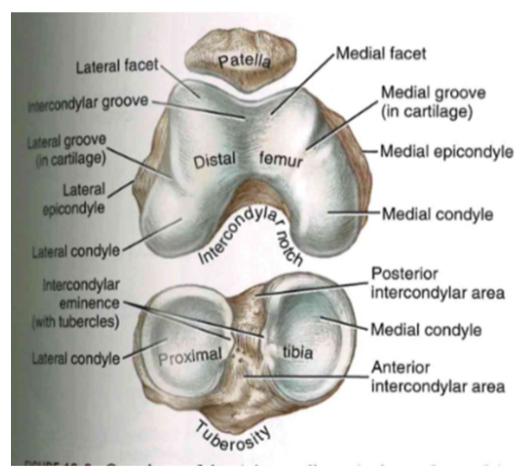
- epi(condyle)= before/above
- intracondyle: groove/notch/
- "separate" 2 condyle (perfect match 3 patella)
Osteology: proximal tibia & fibula
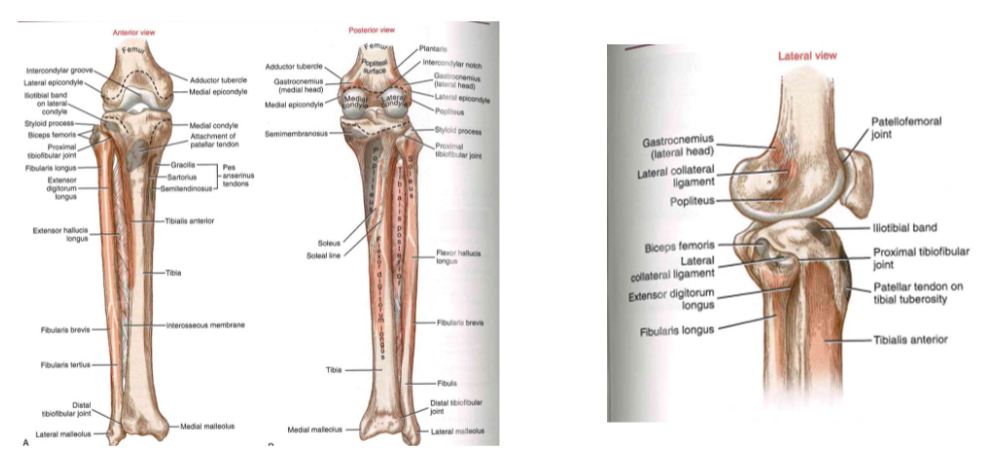
- proximal tibia: not imp, muscle attachments for biceps femoris (5% of forces)
- epicondlye eminence: attachment for PCL and ACL
- tibial tuberosity: attachment for quads
- flat shape = tina plateu
Osteology: patella
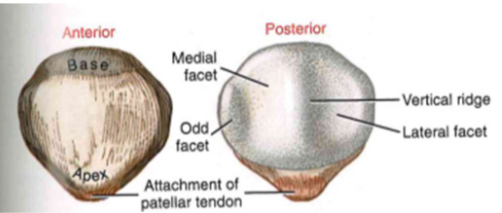
- 4-5mm of cartilage
- facets // seismod bone
- impede @ quad tendon
Arthrology: general considerations
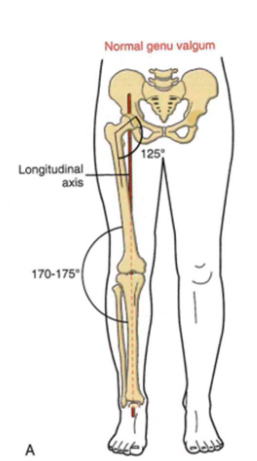
- medial hip angulation @ 125 degrees\
- normal knee valgus: 170-175 degrees
Genu Valgum vs. Genu Varum
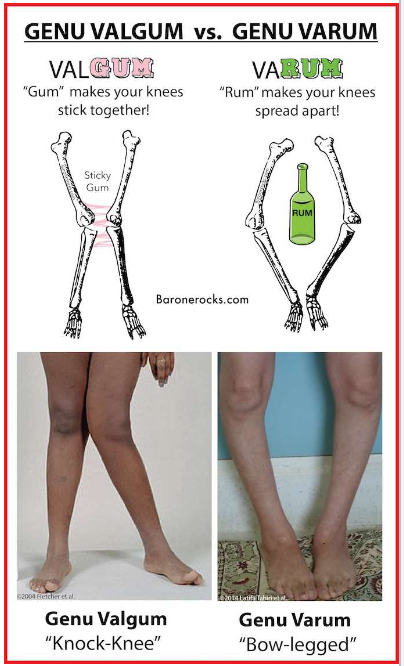
- genu valgum: "gum" bwt legs
- genu varum: bow legs // WITCH
Ligaments, fascia, and muscle table graph
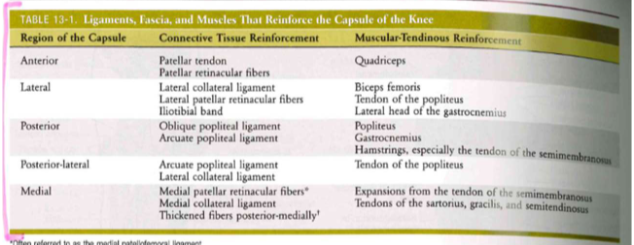
-
regions of capsule
- anterior
- lateral
- posterior
- posterior-lateral
- medial
Arthrology: general considerations, ligaments

-
knee injuries > hip injuries
- rely on dynamic structures
-
knee = intercapsuled + extra support (MCL, LCL,
PC...)
- pes anserius tendons + hams = muscular support+stability
Arthrology: fat pads
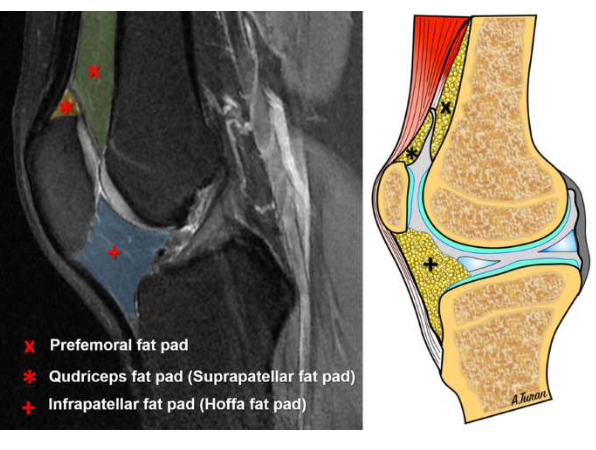
- synovial fluid: line inner surface, UP glide +slide,
-
knee bursa: fat pad, assist with friction-prone
areas (LOWER %)
- quads+intrapatellar
Arthrology: tibiofemoral joint
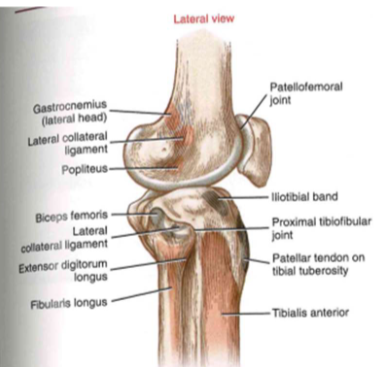
- UP flexion+extension
- femur on slight concave tibia (somewhat flat)
- GOOD mvt @end ranges: tear soft tissues B4 bone damage
Arthrology: tib-fem, menisci
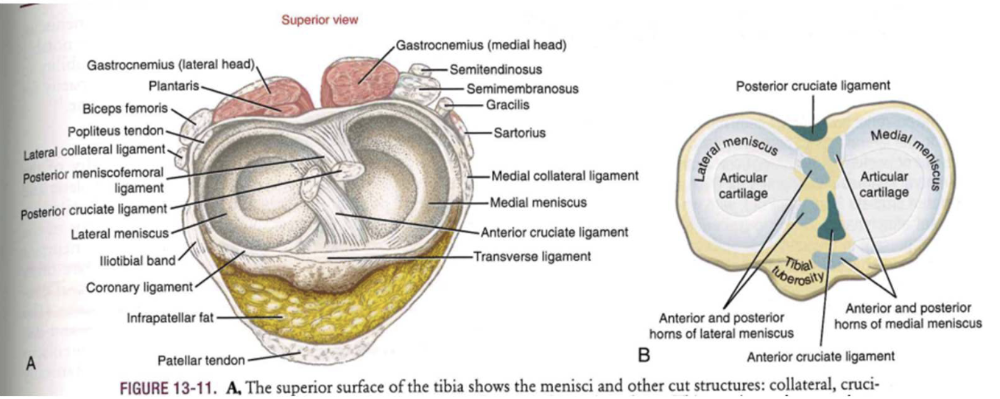
-
Crescent-shaped fibrocartilage structure: deepens
capsule/knee
- "stadium shaped" = hard to slide around/excessive mvts
- quads/popliteus/semimembranosus
- nutrients from diffusion: (red= more blood/white= none)
The menisci: an important job
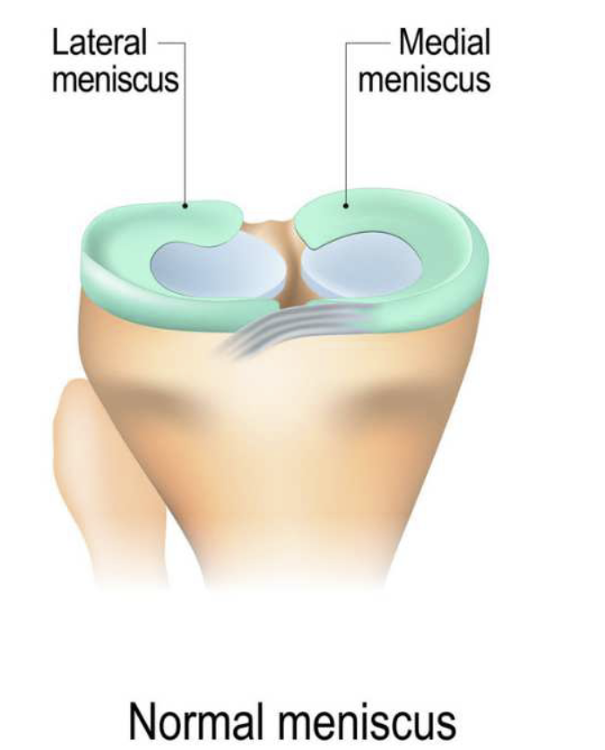
- primary function: compression absorption + increase knee surface area
- medial side = prone to more injury b/c UP axial rotation (plant+twist_
-
MENISCUS SURGERY NOT NEEDED
- risks with surgery = can cause early arthritis
Osteokinematics: tibiofemoral joint
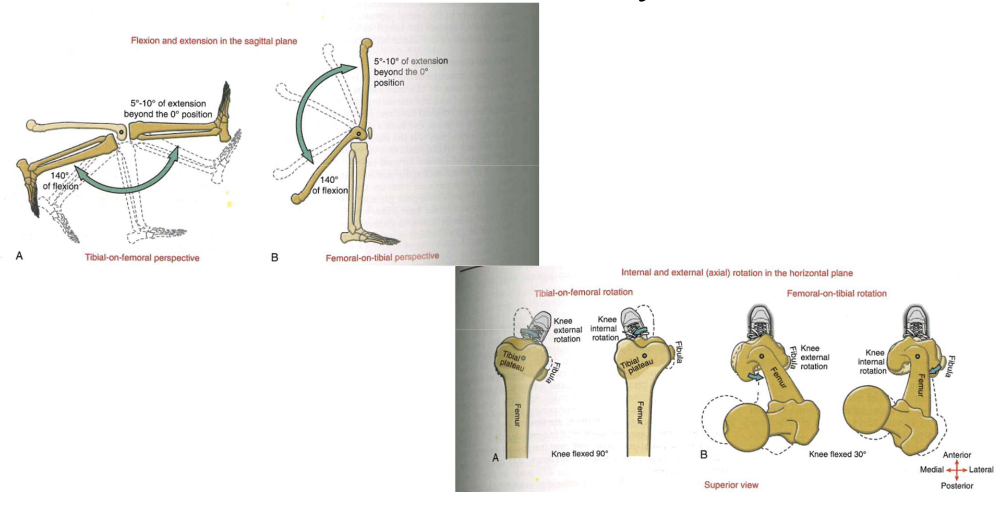
- hinge joint
Osteokinematics: flex/ext
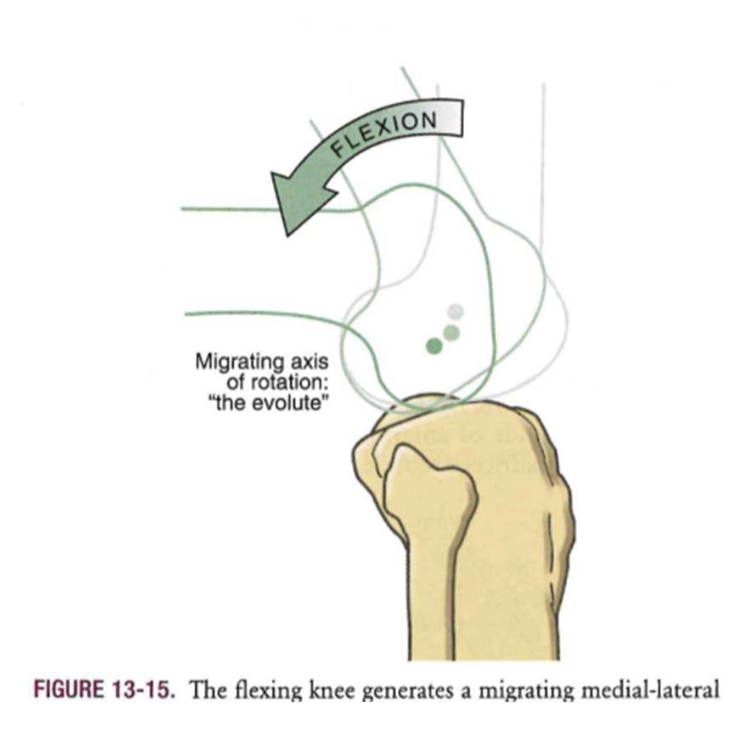
- tibial turberostiy moves medial: cause tibial internal rotation
- concave condle makes axis move => change internal mvt arm of muscle
-
knee extension = closed=packed
- more stable + more force transfer
Osteokinematics: internal & external rotation
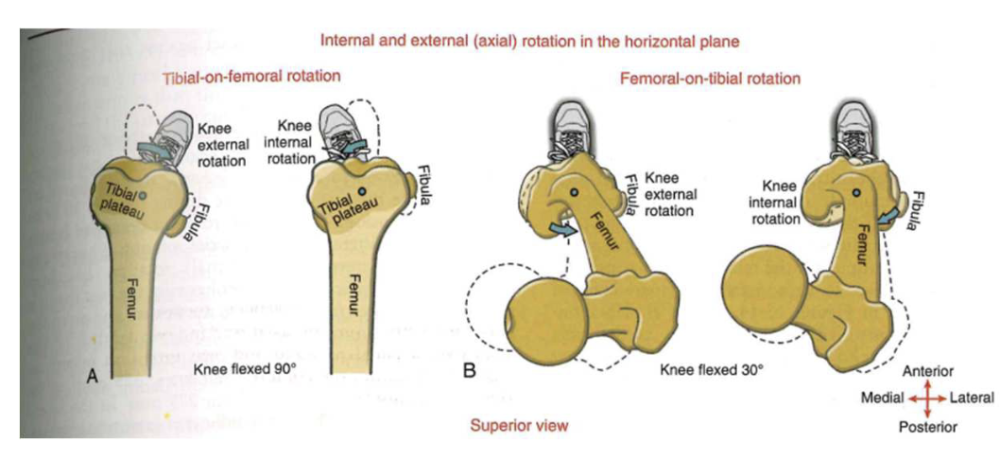
- internal rotation: femur shifts out
- external rotation: femur shifts in
Arthrokinematics of tibiofemoral joint
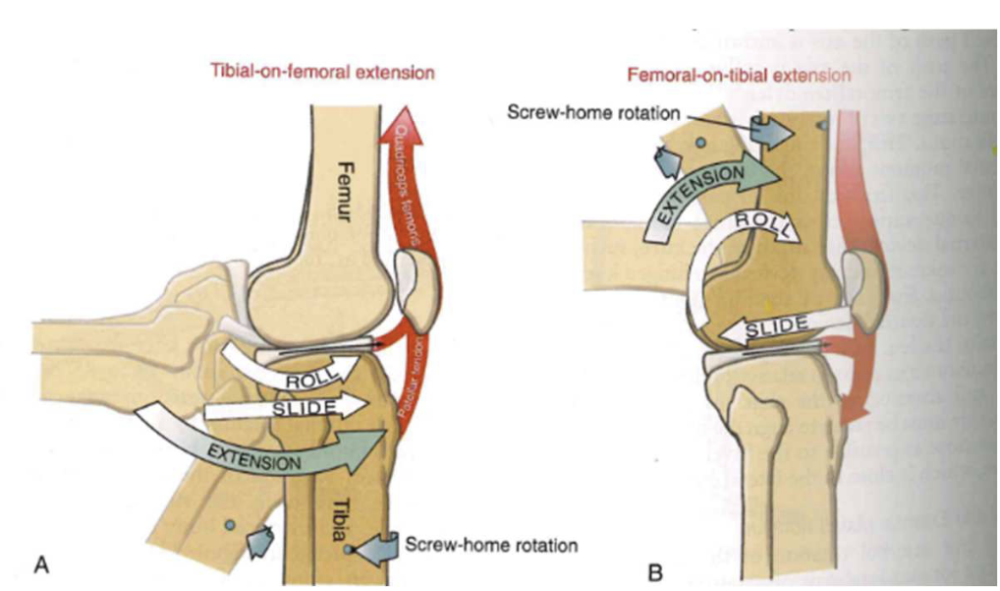
-
tibial on femur (open chain)
- concave on convex = SAME
- anterior roll = anterior slide
-
femur on the tibia (closed chain)
- convex on concave = OPPOSITE
- anterior roll = posterior slide
screw-home mechanism
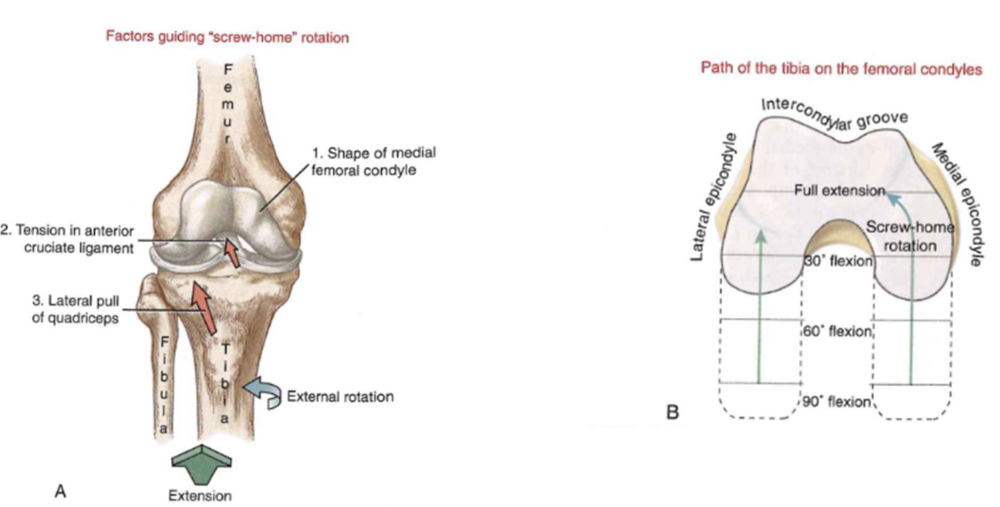
-
for full extension (w/ some Ext.R)
- longer medial + PCL passive tension
- popliteus IR knee = unlocking knee
Arthrokinematics of axial rotation
- SPINNING
Medial & lateral collateral contributions
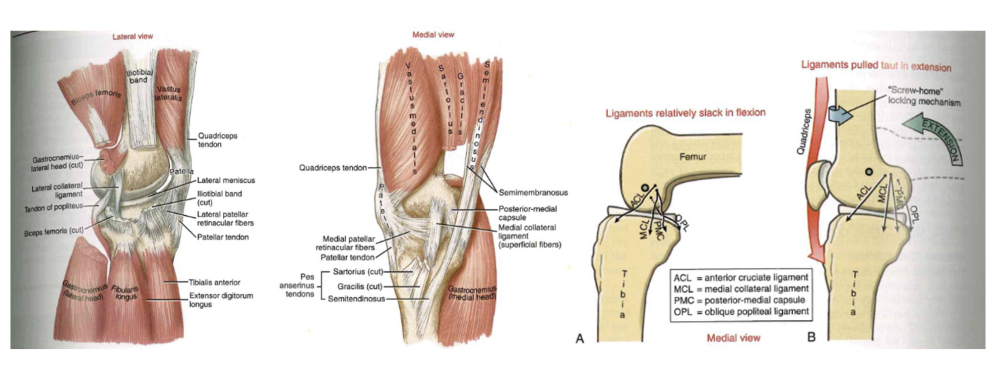
- 2 fiber groups
- goal: prevent valgus+valgum collapse AND some axial rotational prevention
Function of ligament and common mech. of injury chart
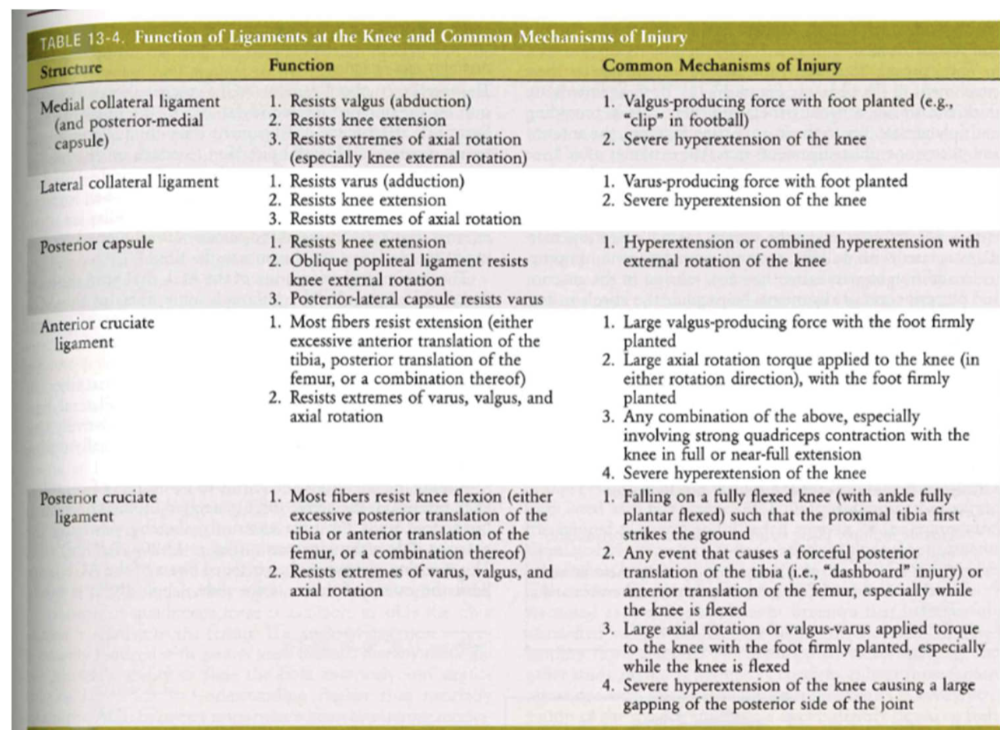
Anterior & posterior cruciate ligaments
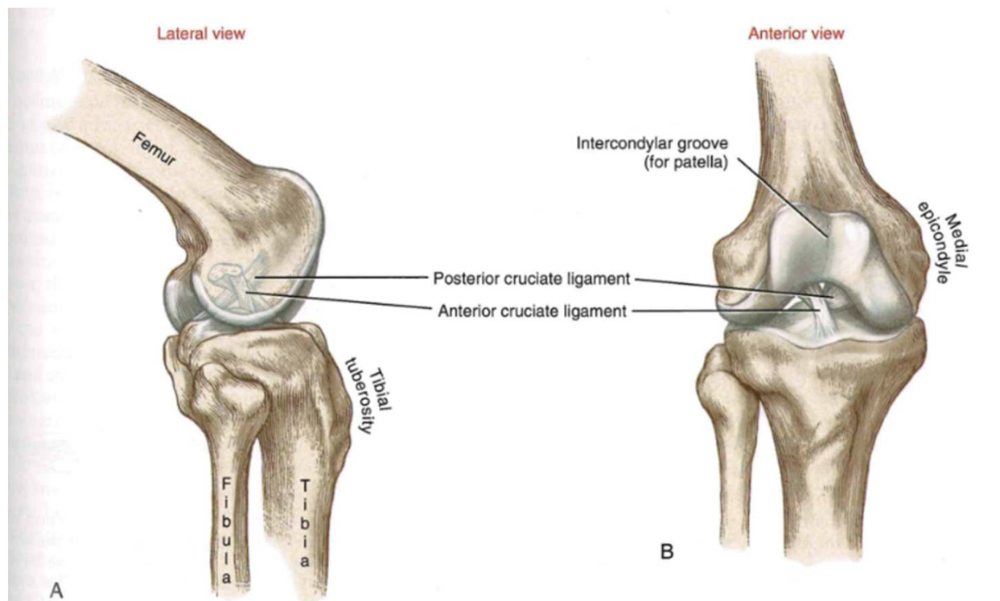
The ACL
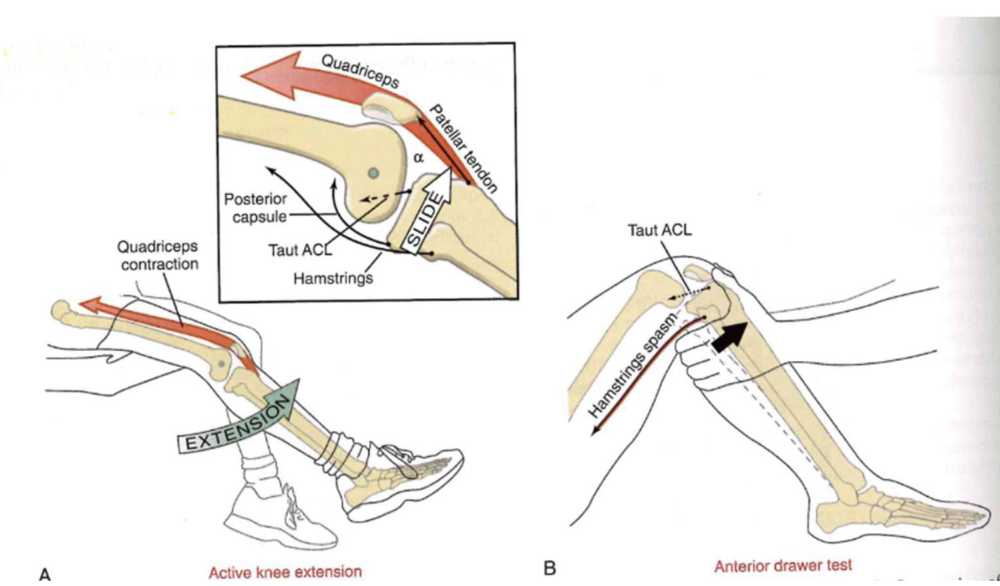
-
knee extension:
- quads pull up + tibia
kicks up + femur want to roll up
- => keeps ACL taut
- KEY = quad strength
- quads pull up + tibia
kicks up + femur want to roll up
- QUADS: antagonist of ACL
- Tear ACL: UP translation, pull on tibia (rotate foward+slide forward)
- TEAR w/o pull: valgus, hyperextension, activate quad at flex/end range + valgus
Posterior cruciate ligament
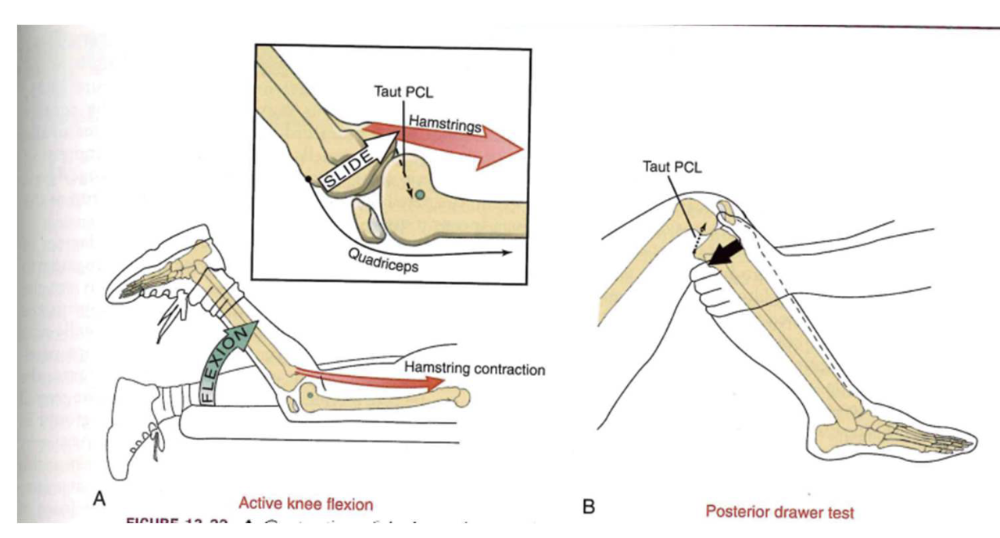
-
checks posterior slide of knee/tibia (knee flexion)
- most taut
- tear PCL: tibial slides backward
The patellofemoral joint
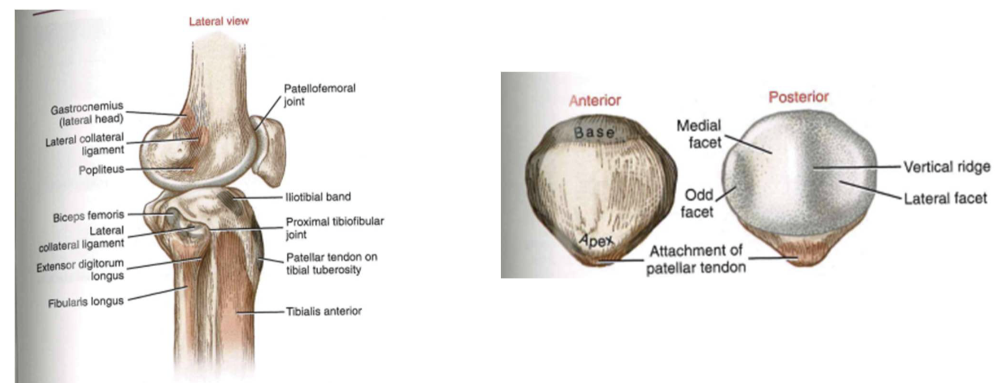
-
stable in boney aspect
- stabilized by quad + patella wedge in notch
- medial +lateral femoral ligament
Patellofemoral joint kinematics
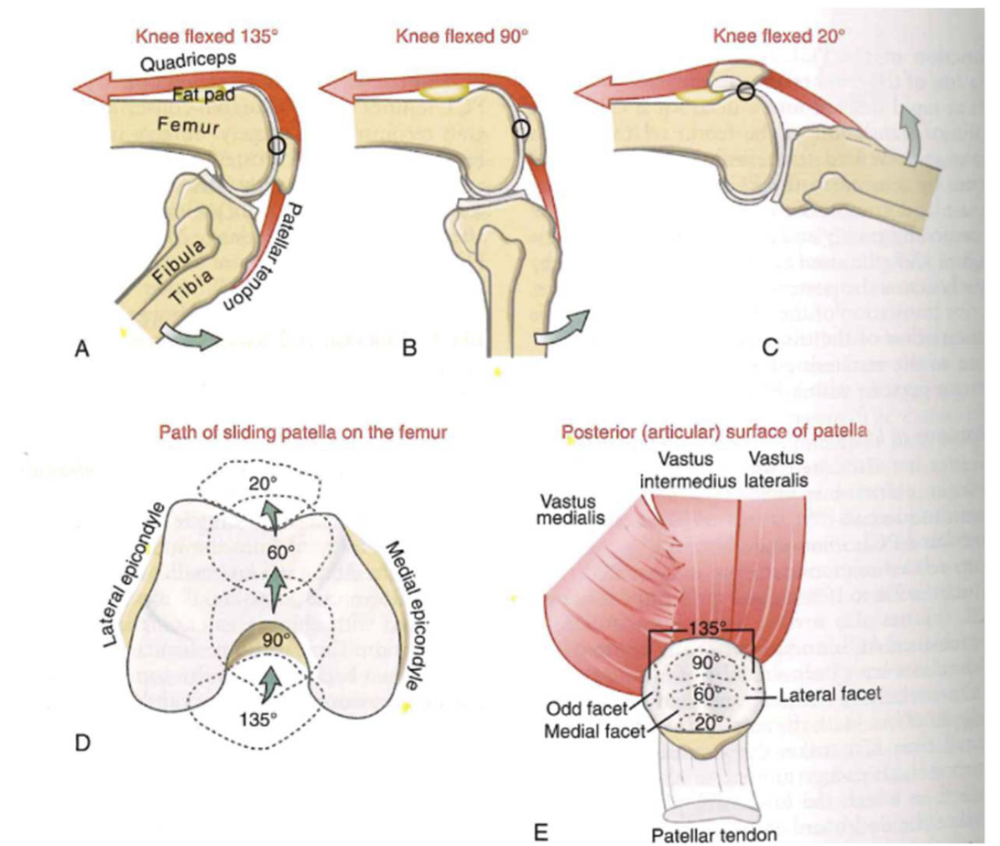
- closed chain: femur slide under fixed patella
- open chain: patella slide on fixed patella
-
end range flexion: tibia contact points move in
k.flex = only 1/3 pf patella contact w/ mvt
- good b/c = UP knee flexion + slide (bend/glide)
- @90 degrees: doesn't move patella
Muscle function: extensors (aka the quads)
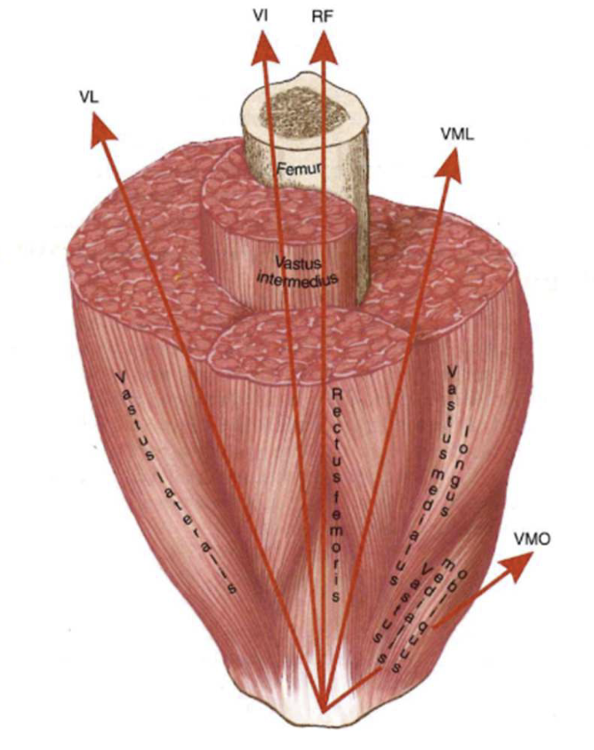
-
80% of torque produced by vastus m. + 20% from rectus
femoris
- connect to quad tendon
- extensor mechanism: quads + quad tendon + + patella
- 66% more than knee flexors
- isometric, concentric, eccentric
External torque demands
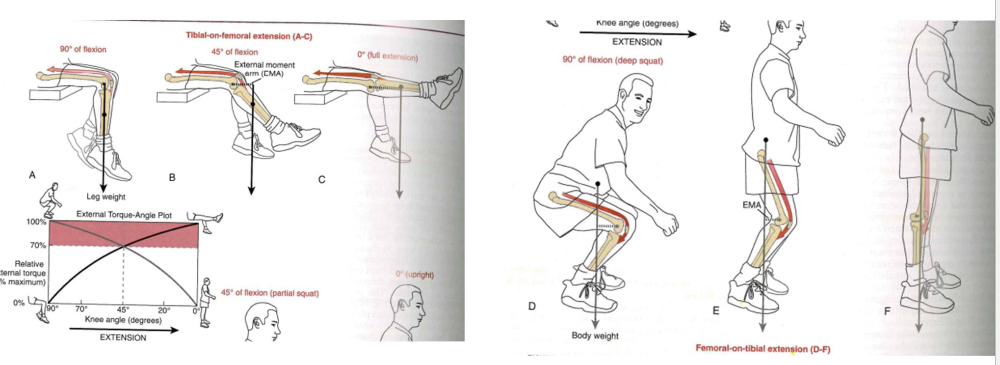
-
open chain: (tibia on femur)
- more extension -> most mvt arm -> most torque
- straight knee = larger external
-
closed chain: most mvt arm + knee flexion
- miss squat at hole // not at top
Internal torque demands
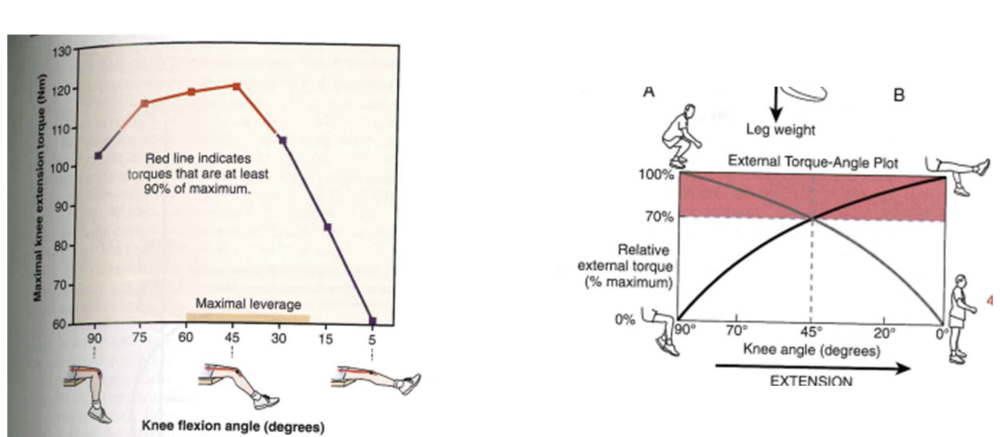
-
max in torque @45-70 degrees of knee flexion
- least torque @ max knee flexion + extension
-
most torque abilities
- squat hardest @bottom + middle
- squat easiest @top
The role of the patella
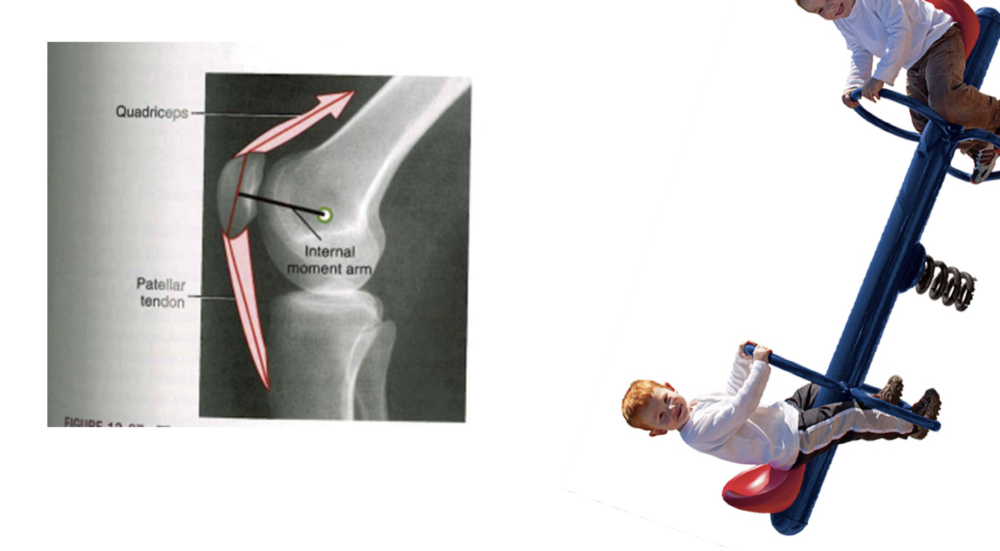
-
functional length of external mnt arm of quad
- longest @20-30 degrees flexion
- function: lengthens quad (spacer)
- HIGH compression force
Patellofemoral joint kinetics
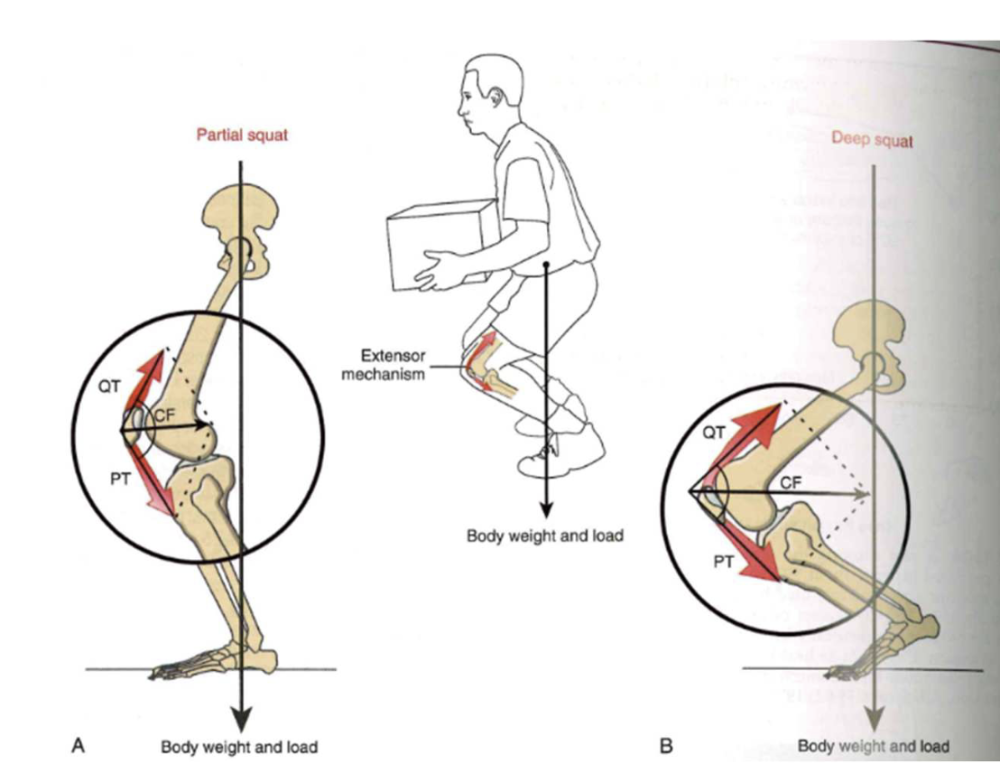
-
deep flexion: more compression (max @60-90 degrees)
- contact area of patella + tibia @ same degrees
- knee over tore argument: force from knee + butt
- LOW knee bend = HIGH compression vector
Role of the quadriceps in patellar tracking
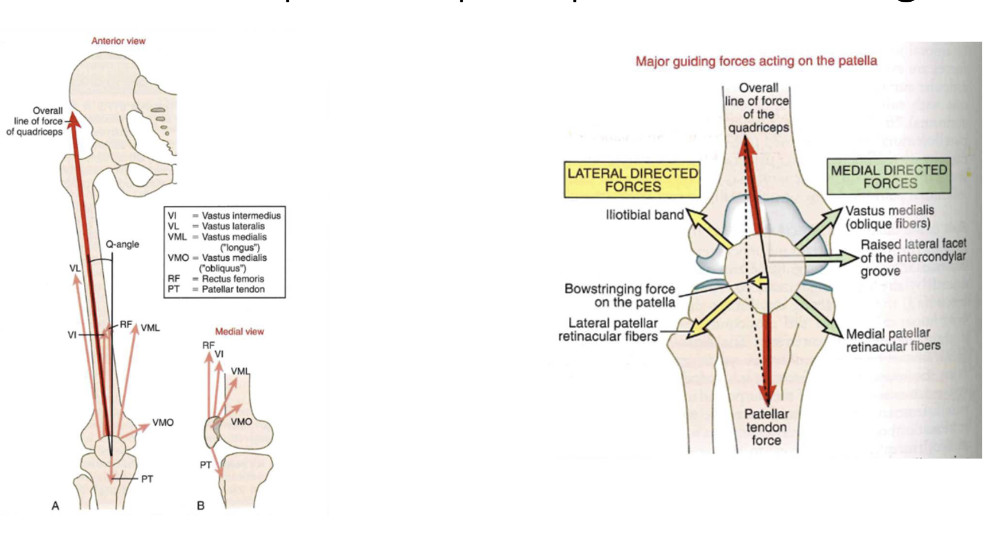
- slight lateral pull of quads (b/c vastus): pull patella more laterally
- Q angle: 13-15 degrees (normal)
WARNING: PATHOANATOMICS OUGHT NOT DICTATE CARE
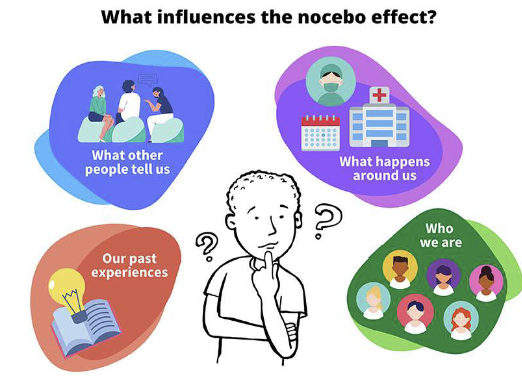
- pathobiomechanics/anatomy is only a part of entire picture of a human
- procedures + paradigms NOT fully tested = adopted as standard care
Interconnectedness
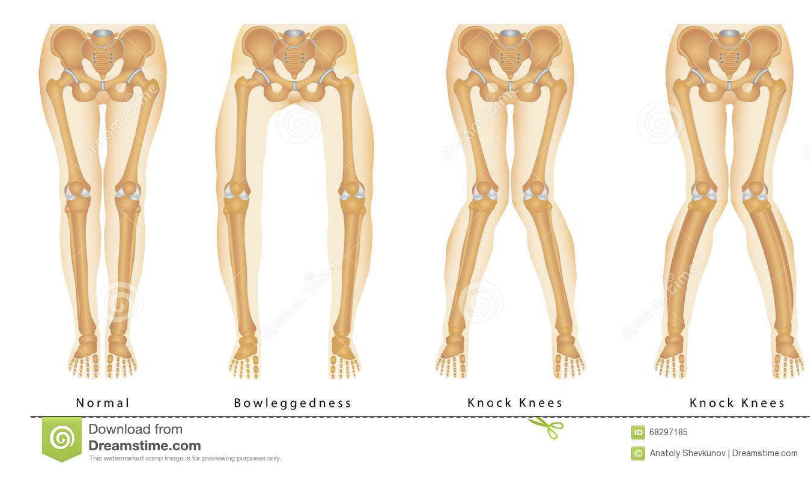
- where genu valgum originate
- Boney: hips, knees, tibias, ankles
- weakness: hips, ankles
Muscle function: knee flexors/rotators
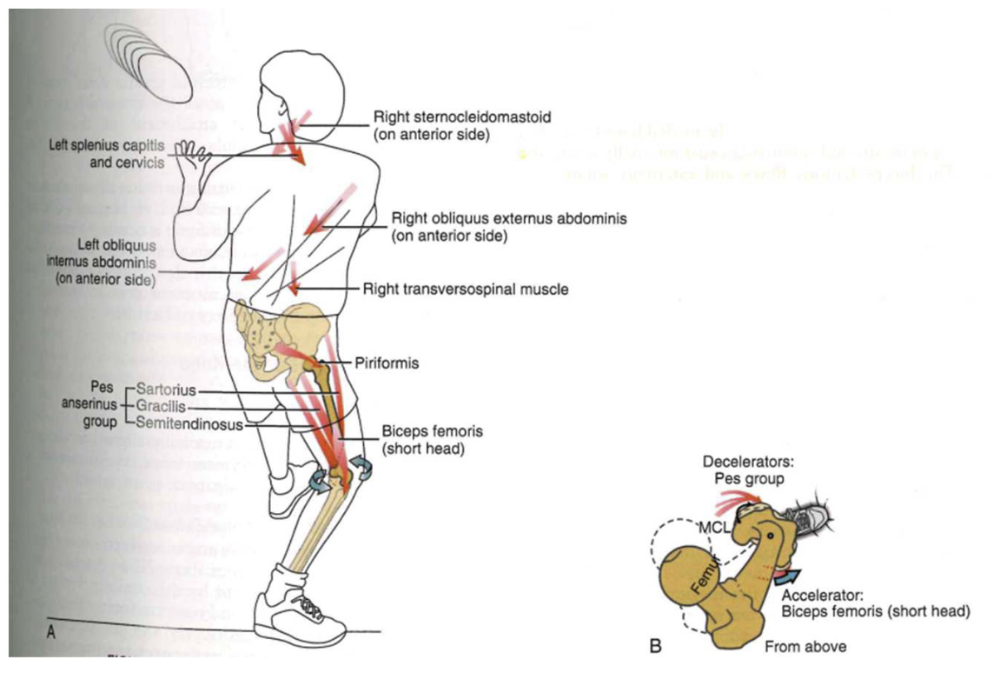
-
all muscles that crosses posterior knee (NOT
gastrocnemius) => flex + anterior rotate knee
- closed chain
Control: tibial-on-femoral osteokinematics

-
hamstrings: help control tib-fib kinematics,
accelerating
- different max torque from leverages: from force-length NOT moment arm)
Maximum torque: flexors
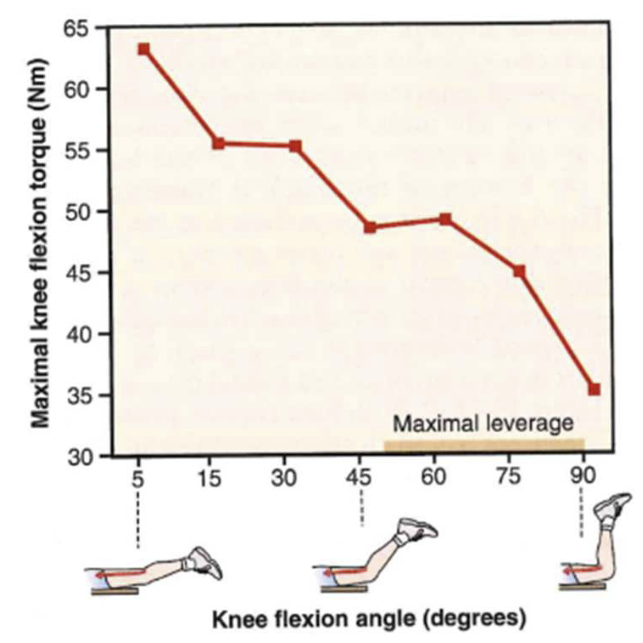
- force relationship
- Max leverage: 50-90 degrees
-
Knee torque and flexion angle inverse relationship
- HIGH knee flexion torque = LOW flexion angle (degrees)
- LOW knee flexion torque = HIGH flexion angle